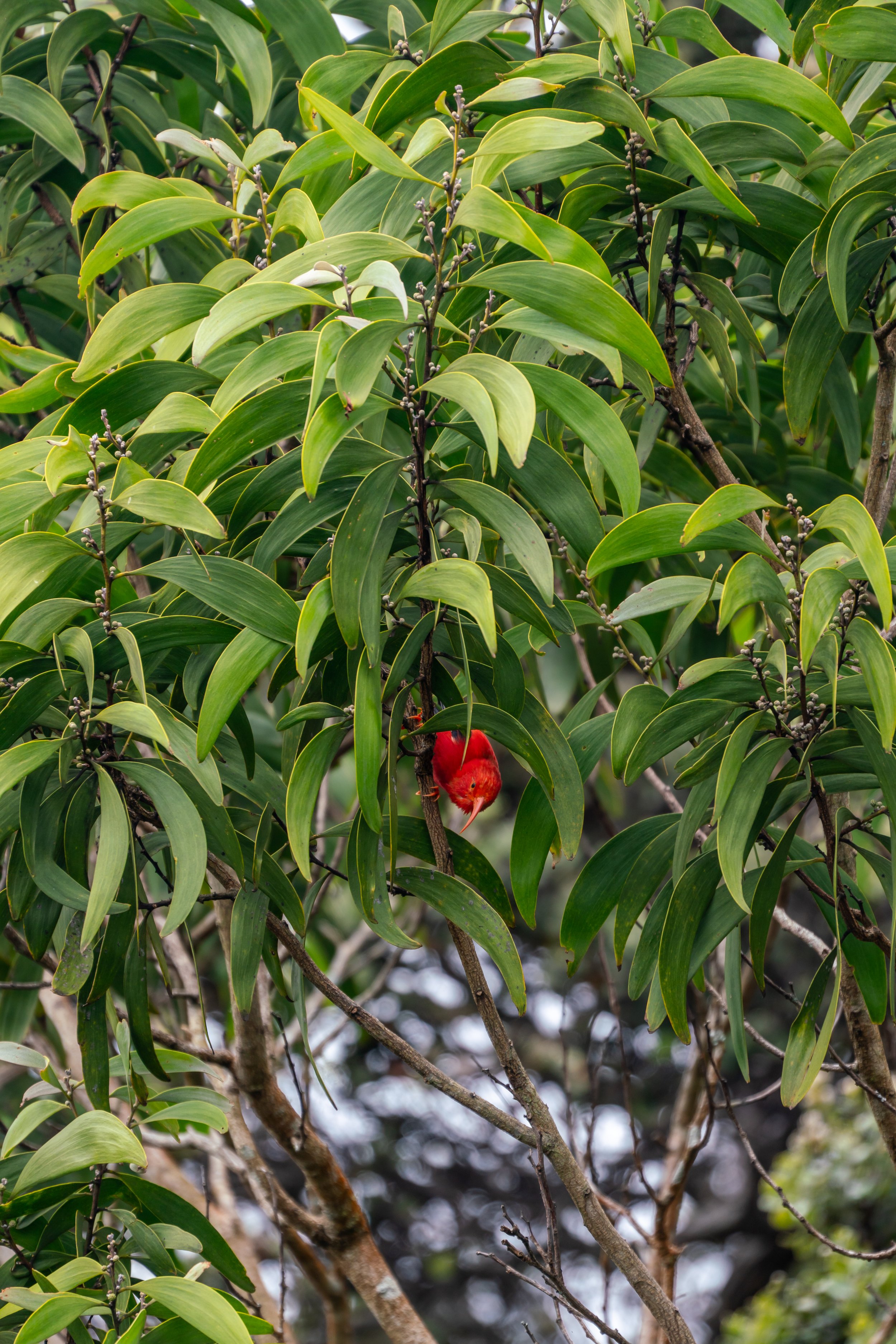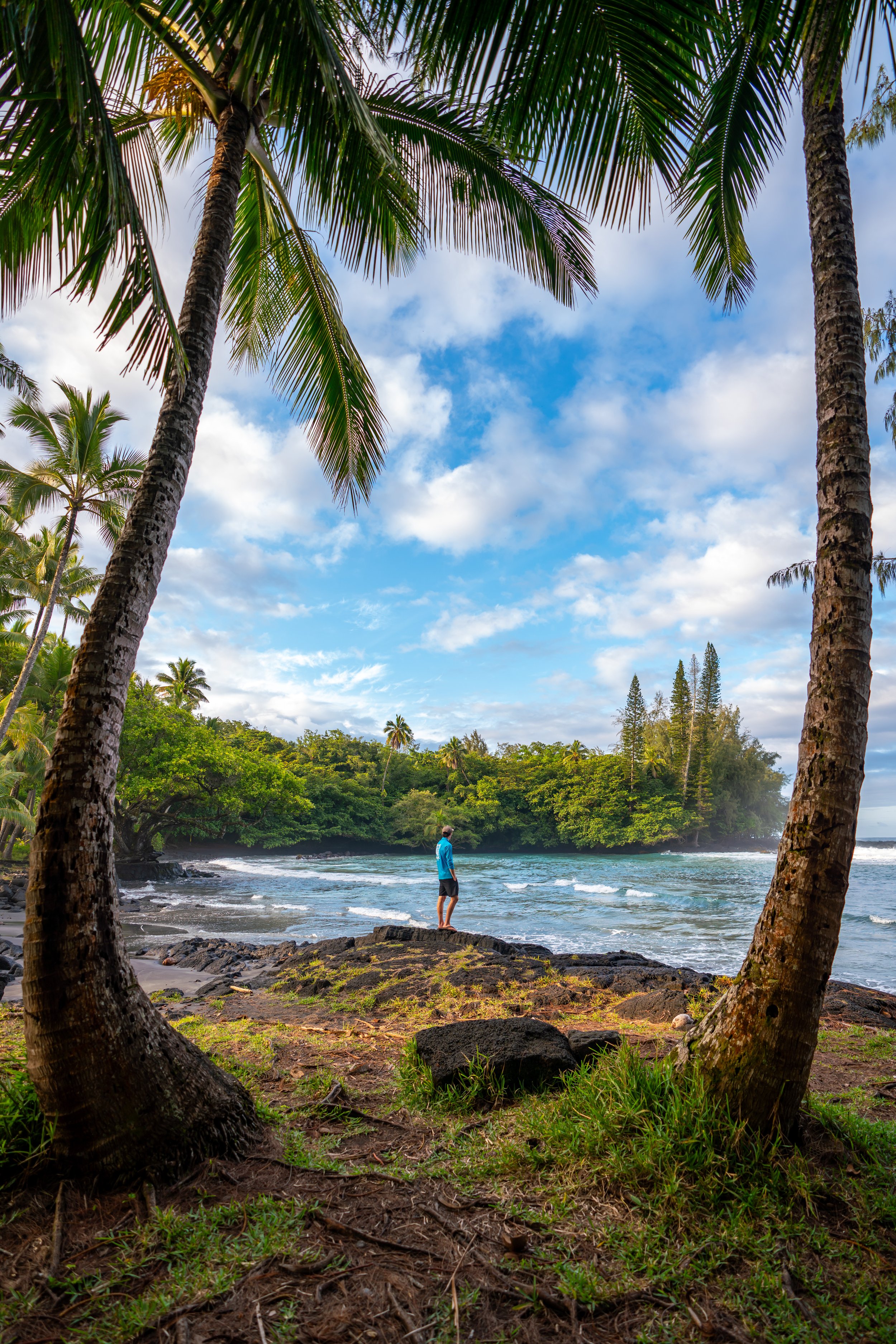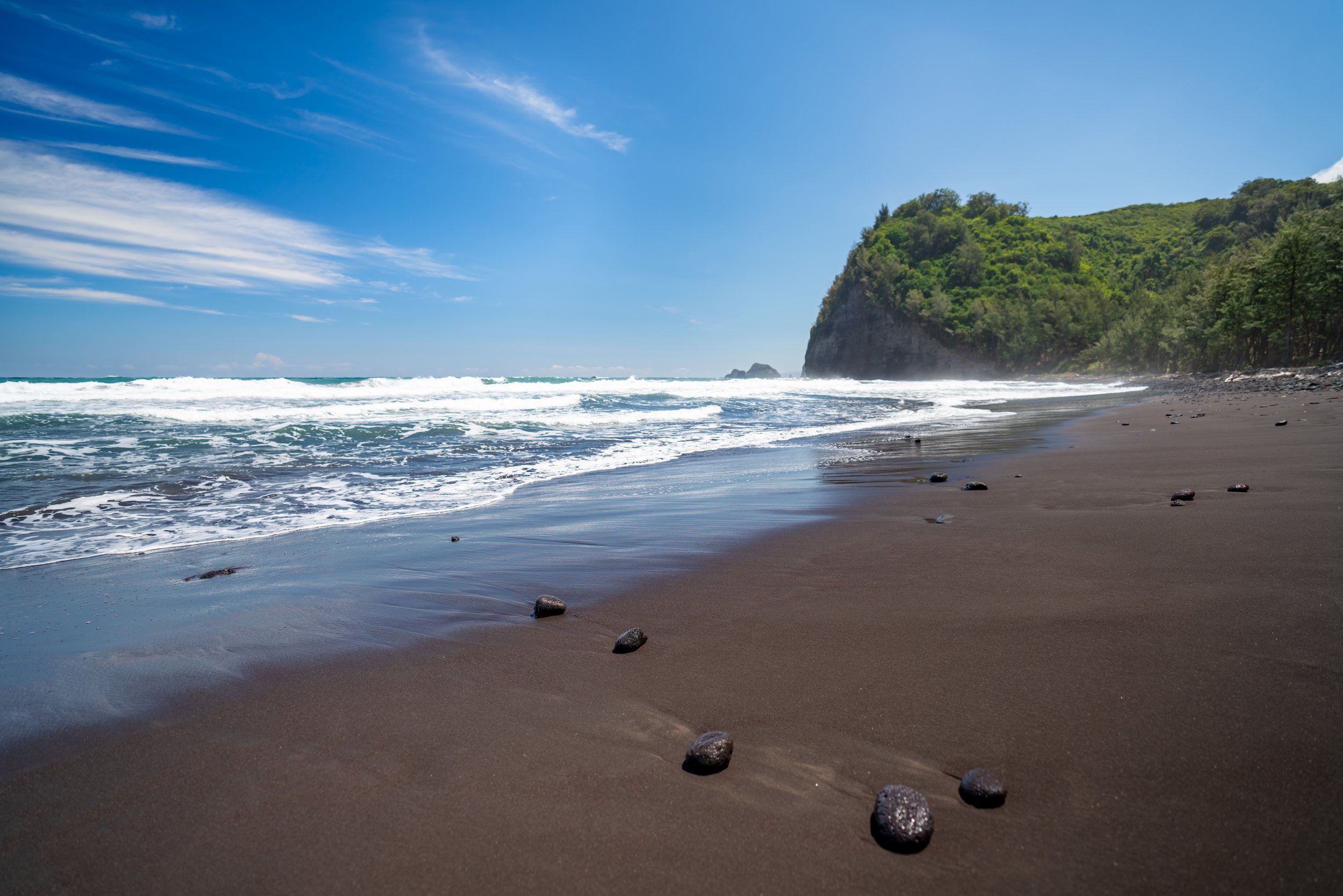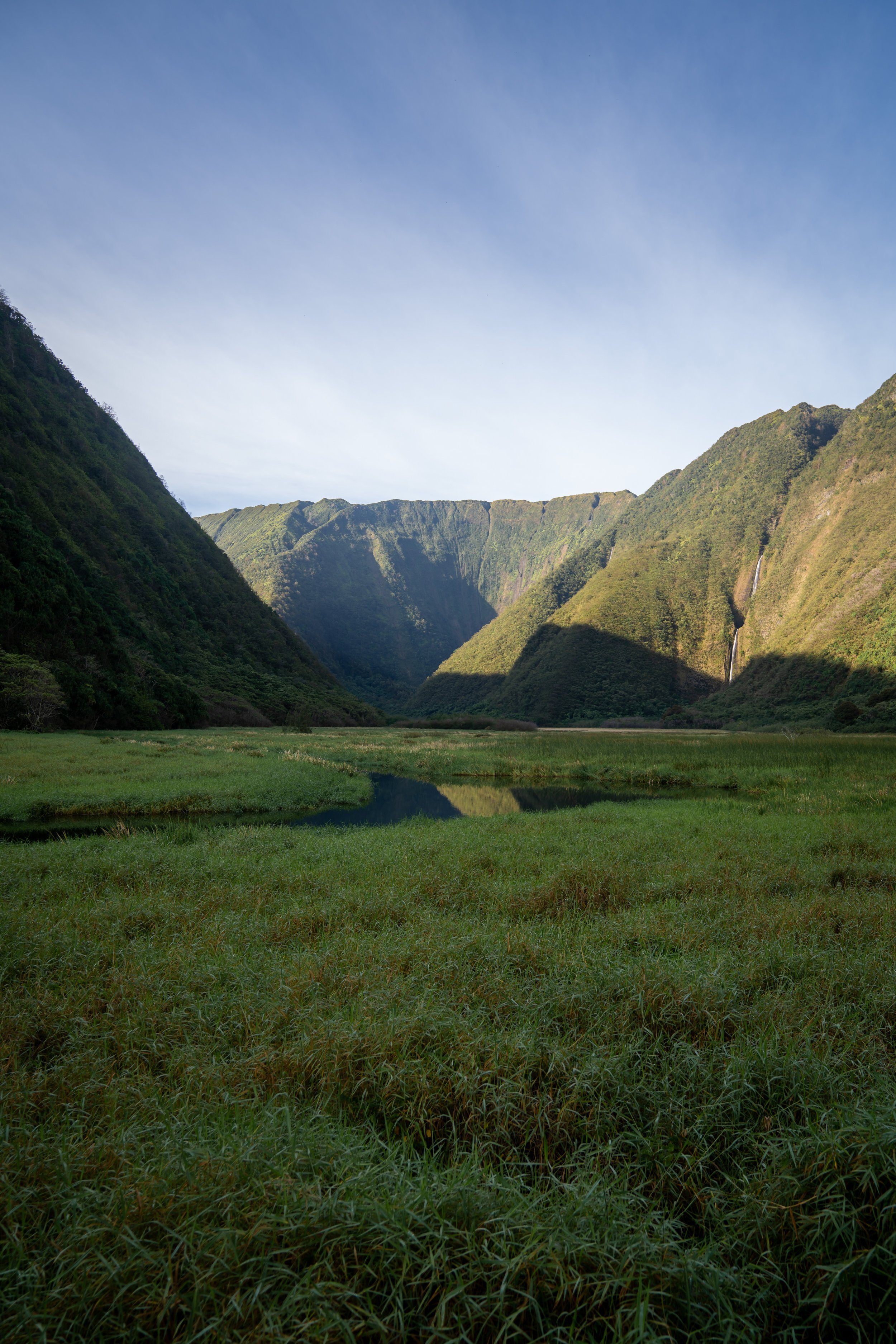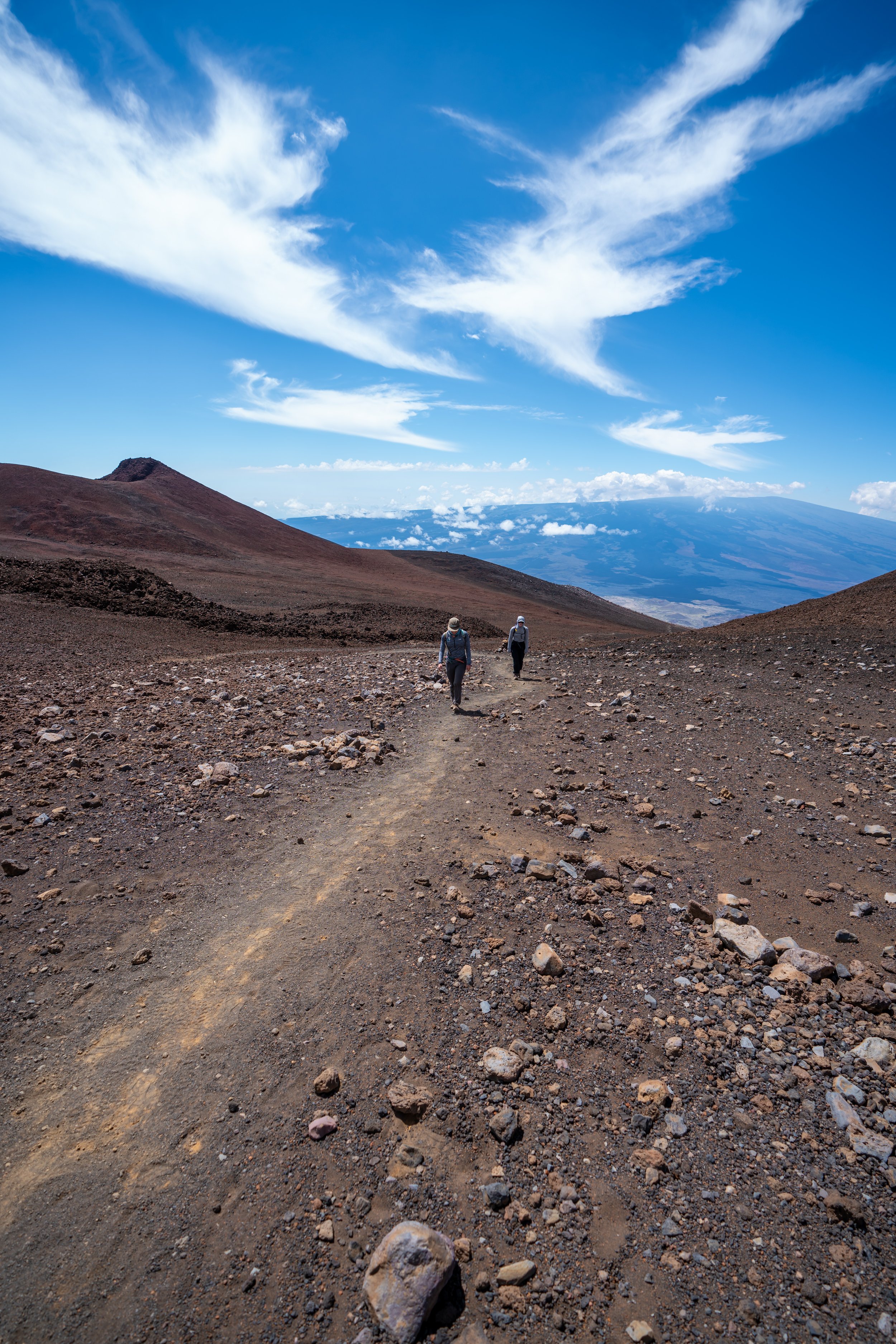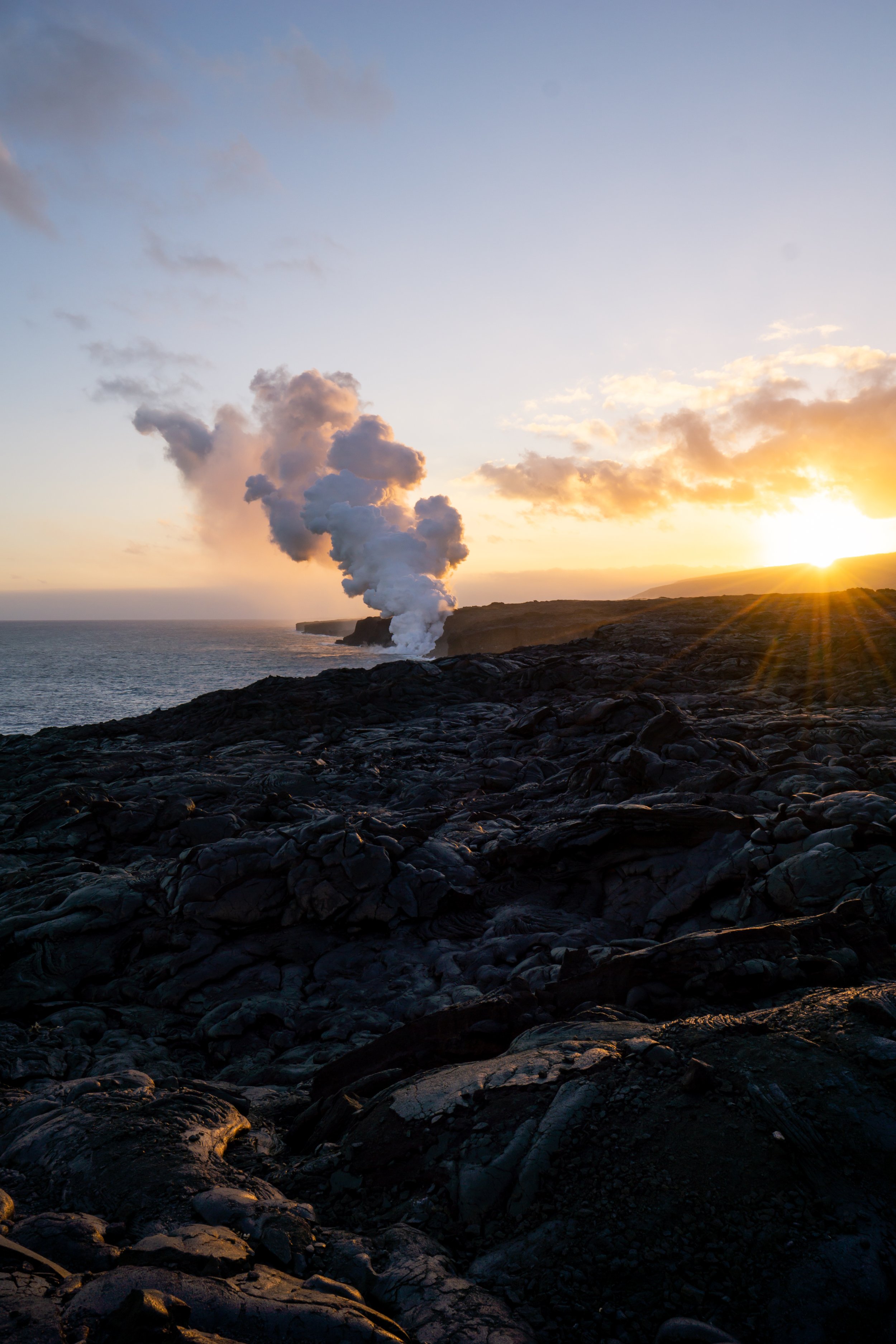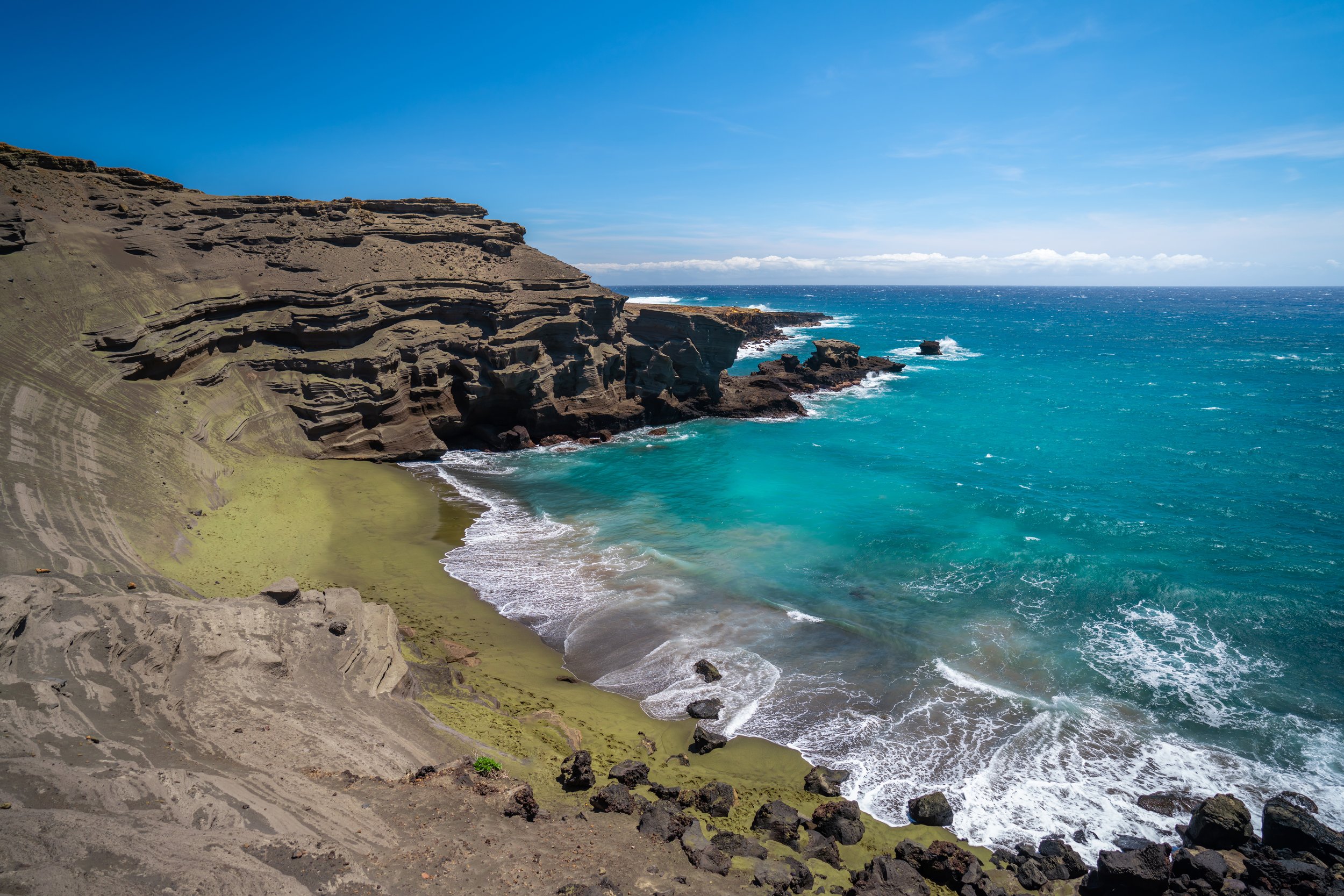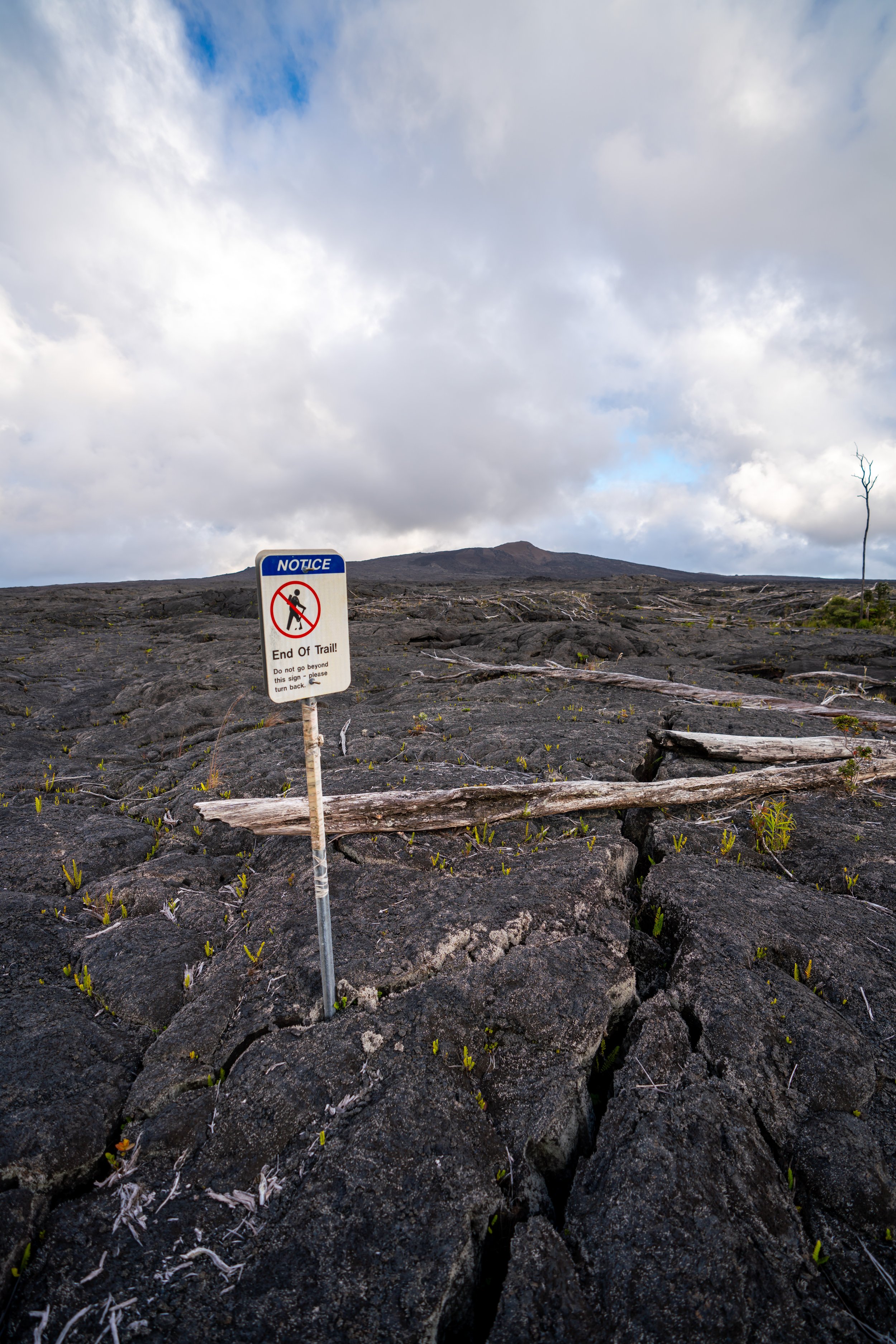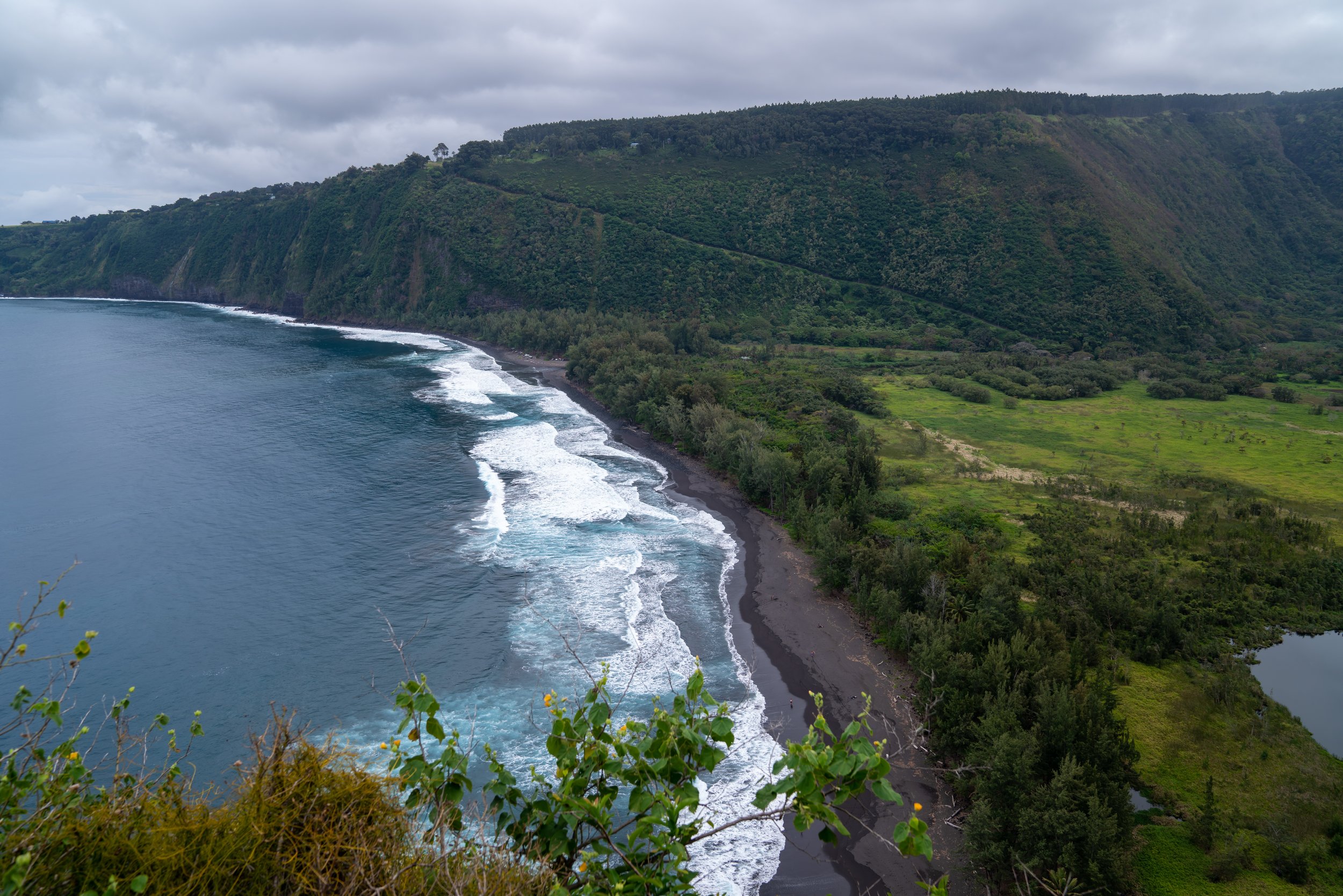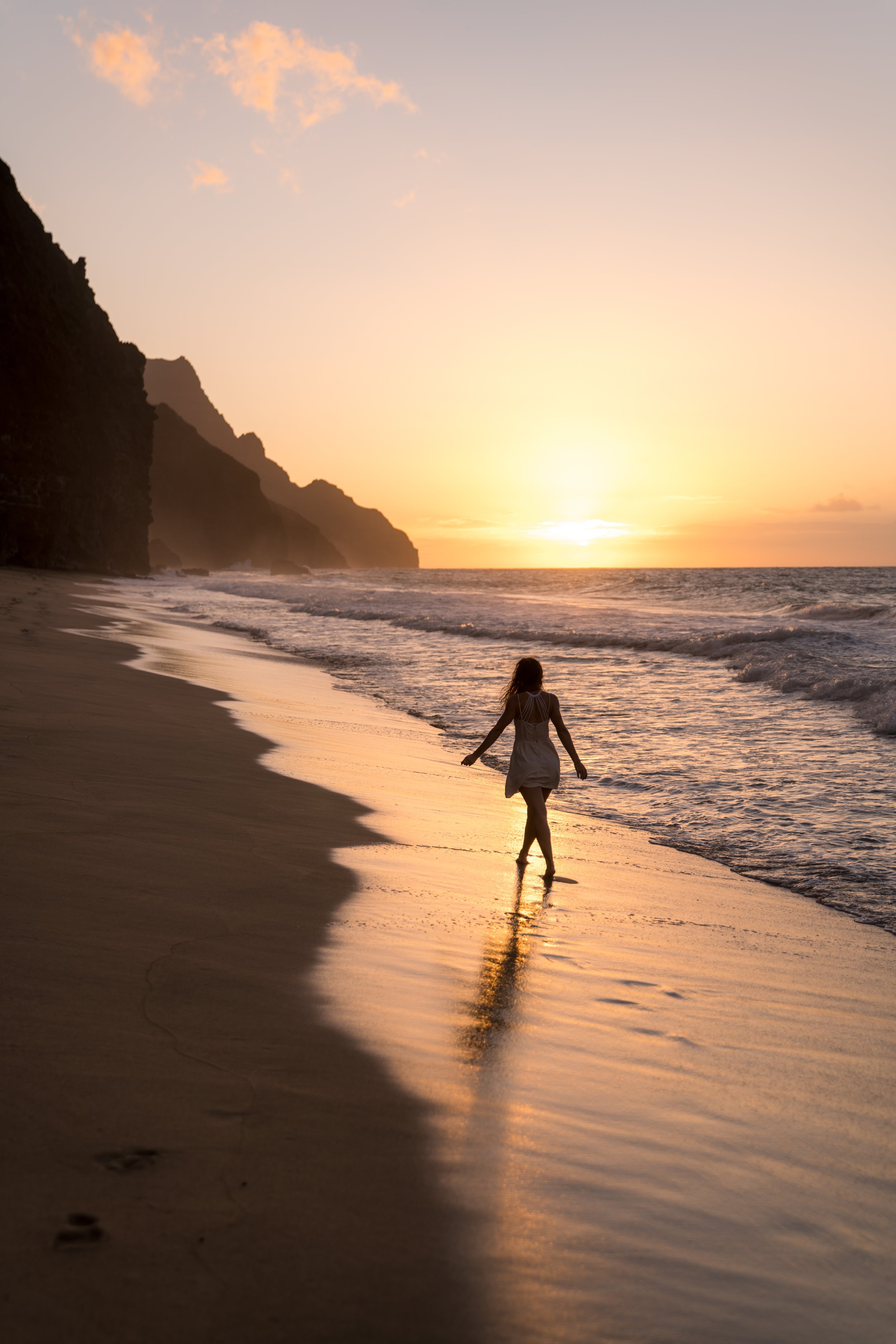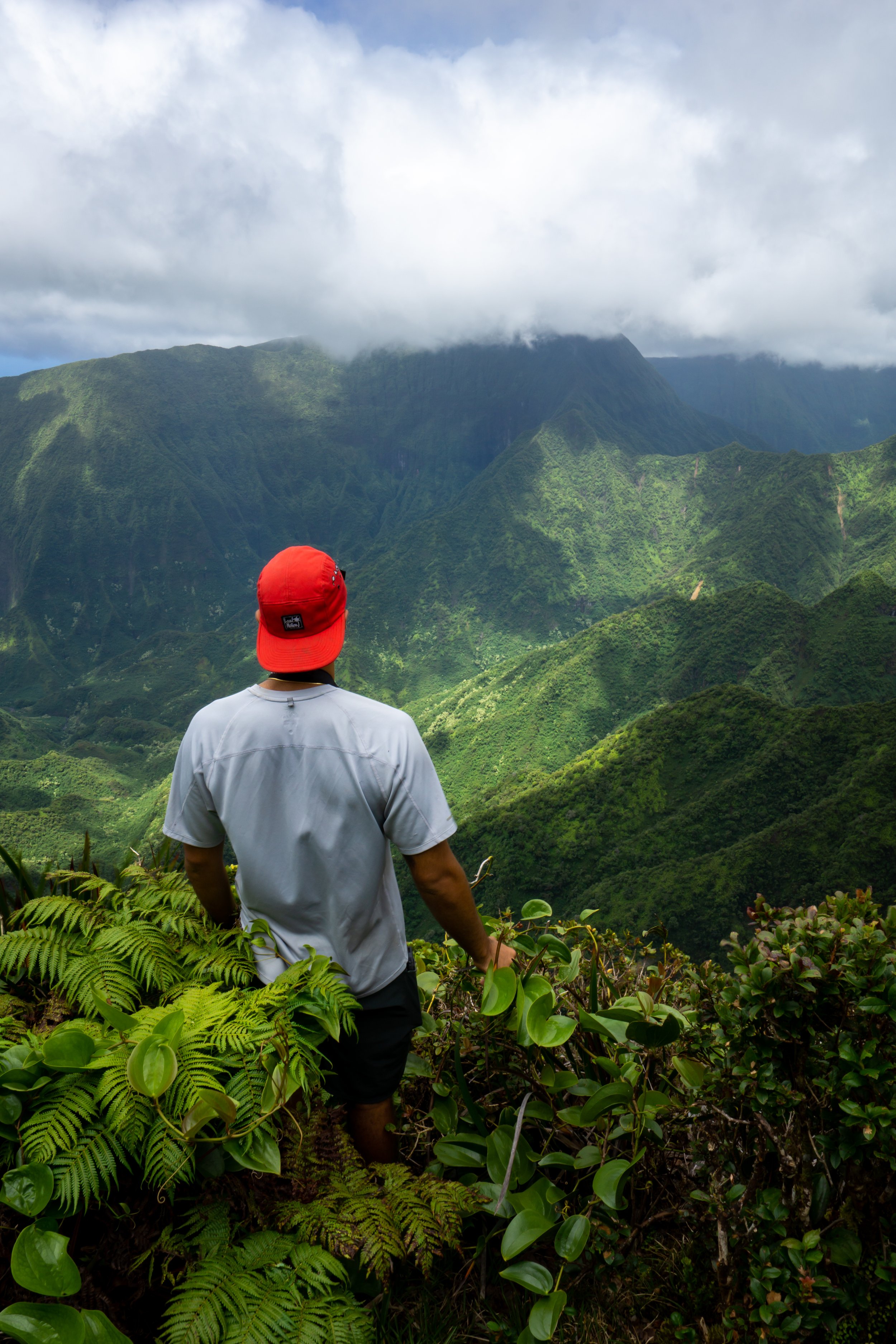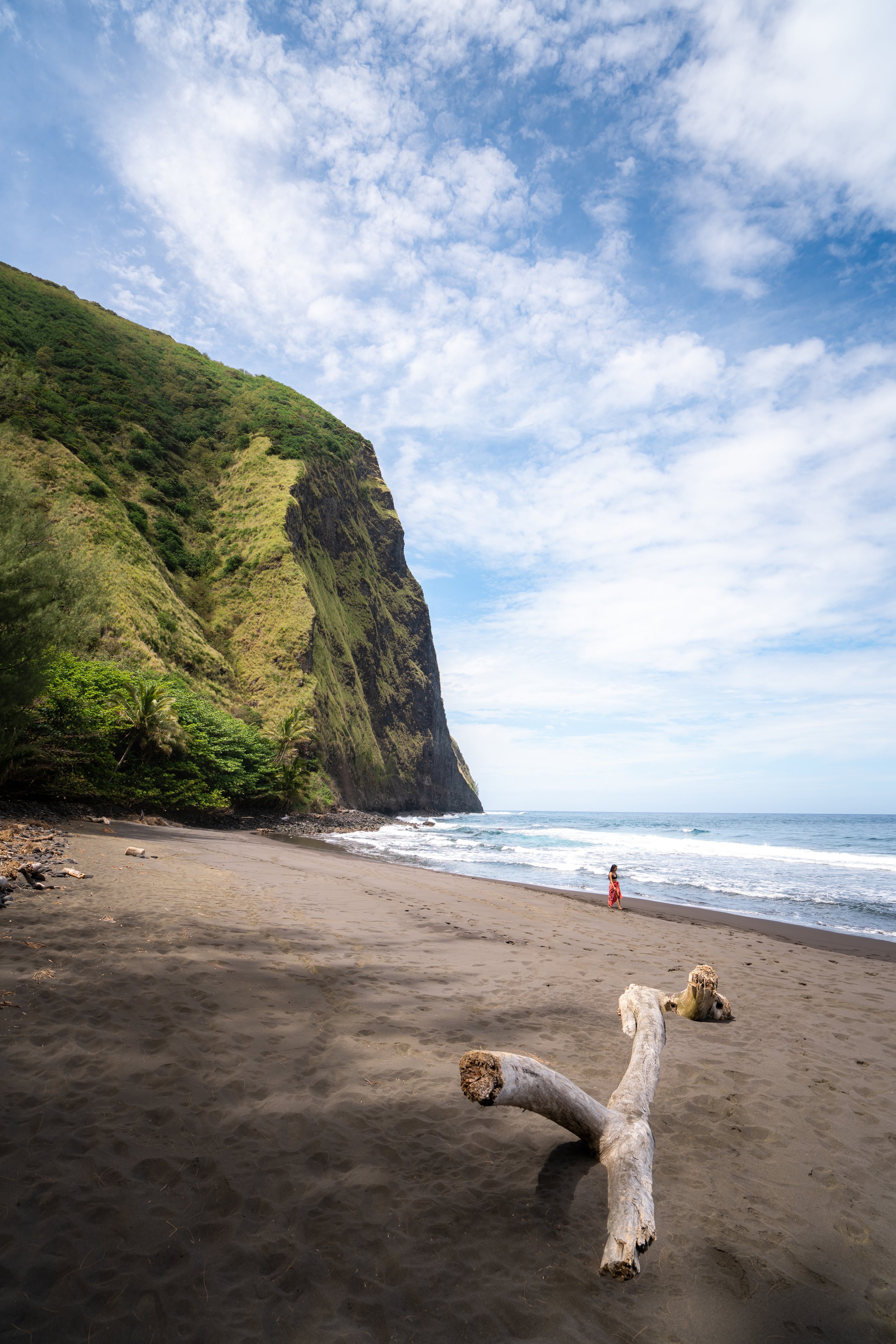Hiking the Puʻu Huluhulu Trail on the Big Island of Hawaiʻi
Distance: 1.3 miles / 2.1 km
The Puʻu Huluhulu Trail on the Big Island of Hawaiʻi is a beautiful, easy, and often overlooked day hike up an ancient volcanic cinder cone off Saddle Road, near the access road and hike to the Mauna Kea Summit.
That being said, Puʻu Huluhulu isn’t just one trail. Rather, it’s a network of small loop trails around the old volcanic peak, which is reflected in the distance above.
By this, I mean that this distance is the combination of all the short trails around Puʻu Huluhulu—which is exactly how I recommend hiking the trail—in order to see the best of everything this hidden gem has to offer!
Puʻu Huluhulu Trailhead Parking
Parking for the Puʻu Huluhulu Trail is located at either one of two trailheads.
First, there is the option to park directly off Mauna Loa Observatory Road, which is what I recommend, or there is an alternative parking lot off Saddle Road.
That said, I recommend reading the section below to learn more about each trailhead and why each one makes sense for different reasons.
Google Maps Directions: Puʻu Huluhulu (Mauna Loa) / Puʻu Huluhulu (Saddle Road)
My Hawaiʻi Hiking Checklist
Osprey 3L Water Bladder - The Osprey 3L water bladder is the most universal hiking and backpacking water bladder on the market, and it’s my go-to because of the slide-off seal that allows it to be quickly filled from the top. Additionally, individual parts are easily replaceable, such as the bite valve.
Blister / Heel Protectors - I swear by these cheap, amazing heel protectors to prevent blisters for nearly every kind of hiking and backpacking that I do!
Black Diamond Headlamp - Personally, I recommend the Black Diamond Storm because it is one of the brightest, lightest, and longest-lasting headlamps on the market—and trust me, the weight-to-battery-life ratio really does matter!
Hiking / Trail Running Shoes - Depending on the type of trail, I prefer to use either the Keen Targhee for longer, more rugged hiking or the HOKA Zinal Trail-Running Shoe for lighter, less intense trails. In either case, both have been amazing to me for many years across countless environments, and both can be found in men’s and women’s sizes. - (Men’s Keen / Women’s Keen) (Men’s HOKA / Women’s HOKA)
Waterproof Rain Shell - You never know when it may rain, and I’ve learned over the years that a rain shell is far better than a rain jacket. By this, I mean that it’s best to have something that the water will roll right off of, which is why I recommend the Patagonia Torrentshell 3L available in both men’s and women’s sizes.
High SPF Sunscreen - Packing high-SPF sunscreen is a must for long days outside!
Hiking the Puʻu Huluhulu Trail
While the Puʻu Huluhulu Trail can begin from either the Saddle Road or the Mauna Loa Observatory Trailhead, I think both routes are best for different reasons.
If you’re mostly interested in hiking to the top of Puʻu Huluhulu, I recommend beginning from the trailhead off Saddle Road because it’s the most direct.
However, if you want to explore all of the short loop trails around Puʻu Huluhulu, I recommend starting from the Mauna Loa Observatory Road, which will make more sense on the return hike shown at the end of this post.
In this article, I started from the Mauna Loa Observatory Road, as this is the route I typically prefer to hike Puʻu Huluhulu.
Regardless of which trailhead you choose, both routes start by climbing up a short, steep trail almost immediately after leaving the trailhead.
ʻIliahi-ʻAmakihi Spur Junction
At the first split in the trail, go right to continue up to the main trail around the Puʻu Huluhulu cinder cone.
The trail to the left leads to the ʻAmakihi Loop, which is the trail I recommend taking back down at the end.
This species of Pilo is endemic to the upper elevations of Maui and Hawaiʻi Island only.
ʻAmakihi-ʻApapane Junction
At the next split, go right once again to reach the main Puʻu Huluhulu Loop Trail.
Koa-Pilo Junction (Puʻu Huluhulu Loop)
The Koa-Pilo junction is the split for the main trail that loops around Puʻu Huluhulu.
If you’re most interested in summiting, then the trail to the right, the Pilo Trail, is fastest way to the top.
However, I highly recommend hiking around Puʻu Huluhulu because the loop is so short and beautiful!
This is exactly what I did. Therefore, I went left on the Koa Trail, which in my opinion, is one of the most beautiful part of Puʻu Huluhulu.
This next stretch is the most beautiful in the early morning light!
Koa-Summit Junction
At the next split on the back side of Puʻu Huluhulu, continue straight if you want to continue around the loop trail, or go right to hike the short trail up to the top.
I chose to go straight around the loop, as there is another way up to the top further ahead.
Naio-Old Quarry Junction
At the next split shortly after the summit junction, you’ll want to decide whether it’s worth it loop around the lower parts of Puʻu Huluhulu on the Old Quarry Trail or stay up higher by going right on the Naio Trail.
I choose to go left to complete the larger loop because the trails around Puʻu Huluhulu are so quick and easy, but know that taking the Naio Trail is by far the fastest way to complete the loop back to the beginning.
That being said, if you’re only interested in the upper Puʻu Huluhulu Loop (Naio Trail), I recommend summiting at the junction shown above. It’s the easier of the two trails up to the top.
Old Quarry Trail
Since I decided to continue around the 'longer' Puʻu Huluhulu Loop, I took the Old Quarry Trail back down and around to the Saddle Road Trailhead.
Puʻu Huluhulu Trailhead (Saddle Road)
This is where the hike would have begun had you decided to begin at the trailhead off Saddle Road.
Pilo-Naio Junction
If you’ve chosen to hike around Puʻu Huluhulu in the same direction as I have, go right on the Naio Trail to take the fastest route up to the top.
The trail to the left leads back to where this post began, which is the route down shown later in this post.
At this split in the photo on the left, go left to stay on the Naio Trail.
Naio-Summit Junction
Once back below the summit, you can either go straight and take the easier route to the top that was shown earlier in this post, or go left here to take the fastest route to the top.
I went left, and even though the trail doesn’t look like much, it’s fairly easy to get up.
Puʻu Huluhulu
Not only is Puʻu Huluhulu an important ecological forest for native Hawaiian plants and birds, but the cinder cone is also a sacred Hawaiian site.
Please be respectful.
This is the view looking out toward Mauna Kea.
From the top, the easiest way back down is the route mentioned earlier from the Koa Trail.
Koa-Summit Junction
Once back at the Koa Trail, go right to repeat the same short stretch shown previously, which is the fast route back to the Mauna Loa Observatory Road.
Naio-Old Quarry Junction
Then, go right once again at the Naio-Old Quarry junction from earlier in this post.
Naio-Saddle Road Junction
This is the same junction from the trailhead off Saddle Road.
Go right to continue back to the Mauna Loa Observatory Road.
Koa-Pilo Junction (Puʻu Huluhulu Loop)
This the original split where the trails off the Mauna Loa Observatory Road met up with the larger Puʻu Huluhulu Loop Trail.
Go left to hike back down to the beginning.
ʻAmakihi-ʻApapane Junction
This next junction is where the Puʻu Huluhulu Trail split for the second time.
While you could go left to continue back down the same ʻIliahi Trail, I recommend going right in order to complete all the trails around Puʻu Huluhulu.
ʻIliahi-ʻAmakihi Spur Junction
This is the short spur junction that connects the two trails from the beginning.
Go right to continue back down on the ʻAmakihi Trail.
From the the trailhead, you’d probably never even notice the ʻAmakihi Loop off to the left, which is exactly why this post is written in the way it is.
Overall, this is the general route I recommend hiking if you’re interested in seeing all the trails around Puʻu Huluhulu, as it’s what makes the most sense to be able to start and return on slightly different trails.
Native Plants on the Puʻu Huluhulu Trail
The Puʻu Huluhulu Trail is one of the most beautifully preserved mesic native forests, and I ask that you do you part to minimize your impact in this pristine habitat.
Some of the native plants that you can expect to see include ʻIliahi, Koa, Pilo, ʻĀkala, ʻĀnunu, and Naio, to truly only name a few.
If you would like to learn more about identifying these and tons of other native plants from across the Hawaiian Islands, I encourage you to scroll through my separate post.
Read My Separate Post: Native Hawaiian Plant Guide
More Big Island Adventures
If you’re interested in reading about some more amazing Hawaiʻi Island adventures, check out my separate posts below!
Best Hotels & Vacation Rentals on Hawaiʻi Island
Since Hawaiʻi Island is such a big island, I recommend starting your search on VRBO to find places in both Kona and Hilo.
This way, you can plan your adventures on all sides of the island without having to drive too far.
Hawaiʻi Island Airport-Hotel Shuttle
Prices on ride-share apps like Uber/ Lyft cannot beat the price of booking your hotel or vacation rental shuttle prior to arrival.
That being said, the shuttle option below is incredibly cheap, and it’s a great option to get to accommodations across the Kailua-Kona side of the Big Island!
Best Way to Book Rental Cars!
I travel quite a bit, and I know firsthand that finding a good rental car deal can be a challenge, but that’s why I recommend comparing all of your options with Discover Cars.
In short, Discover Cars is a well-known, reputable business that allows you to search for the best deal across companies, and they have the best full-refund cancellation policy I’ve ever seen, valid up to 72, or sometimes even 48, hours prior to your reservation!
Book Here: Discover Cars
Visiting Other Islands
If you are visiting Hawaiʻi Island or heading to another island, check out some of my personal recommendations for Oʻahu, Maui, Kauaʻi, Molokai, Lānaʻi, and Hawaiʻi Island (Big Island) in these separate posts.
If you’re trying to decide which island is right for your visit, check out my overview about each island in the post below.
Read My Separate Post: What is the Best Hawaiian Island to Visit?
What is the Best Time of Year to Visit Hawaiʻi?
The weather in Hawaiʻi can often appear to be warm and beautiful throughout the year, but in my experience, there is a lot more to consider when planning what time of year to visit the islands, such as what island you are considering, what sides of each island do you plan to stay, what activities are you most interested in, the wildlife, and countless other nuanced variables that can all impact the type of trip you can expect to have.
For these reasons, I highly recommend reading through my separate article to not only understand my thoughts regarding the best time of year to come to Hawaiʻi but also what you need to consider based on the time of year that you plan to visit.
Read My Separate Post: What is the Best Time of Year to Visit Hawaiʻi?
Safety
All hikes in Hawaiʻi should not be compared to trails outside of the islands, and hikers should exercise due caution on every adventure, given that many are extremely dangerous.
By this, I mean that Hawaiʻi is known for hot, humid weather, steep, dramatic, and unstable cliffs, and flash floods, which can occur without warning. Therefore, it is important that you check the local forecast, understand the physical condition of your entire group, and pack sufficient food and water before attempting any adventure.
Disclaimer
All information provided on this blog is for informational purposes only and is not intended to be a substitute for information or advice from qualified professionals or managing agencies.
Noah Lang Photography LLC makes no representations or warranties regarding the accuracy or completeness of the information provided here, and readers should use their own discretion, judgement, and seek professional advice where it is appropriate.
Furthermore, Noah Lang Photography LLC shall not be held responsible for any injuries, lost individuals, or legal issues arising from the use of information provided on this website, and if applicable, the above safety disclaimer should be referenced to provide a generic overview of the risks involved.
All said, the content on this blog is for the sole use of Noah Lang Photography LLC, and unauthorized use or reproduction of this content is strictly prohibited.
Disclosure
This post is not sponsored.
However, some of the links in this post are affiliate links, which means that I may earn a small commission if a purchase is made through one of those links. This commission comes at no additional cost to you, and I only recommend products that I personally use and believe will add value to my readers. Thank you for your support, which enables me to continue creating more!
To read the full privacy policy, click here.

About This Blog
Noah Lang Photography, also known as @noahawaii, is 100% reader-supported!
I do not accept guest articles or sponsored content of any kind on my blog, which is why, if you enjoy the outdoor and travel content I create, please consider buying me a coffee!
I appreciate your support, which helps me continue to keep this blog alive!










